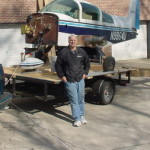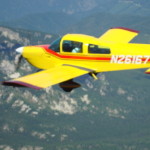Home › Forums › Technical Information › It is difficult to document small gains.
Tagged: drag, rigging check
- This topic has 2 replies, 3 voices, and was last updated 8 years, 10 months ago by
 Ron Mowery.
Ron Mowery.
-
AuthorPosts
-
-
March 8, 2015 at 23:49 #1364
 Bob HodoParticipant
Bob HodoParticipantSomeone posted some performance numbers for his HC cheetah with sensenich prop on the grumman gang. His numbers were very close to mine as far as TAS at a specific rpm.
But he tops out at 2775 rpm. For the record, when I say rpm I mean TRUE rpm, not what a 38 year old mechanical tach is saying. I have been advised not to say what my true rpms are wide open strait and level, but I am starting a discussion, FWIW.
Anyway, the only thing I could think of telling him was to report back his static rpm with a warmed up engine. I know mine pretty close because I recently did a dynamic prop balance with a device that was accurate within 1 rpm. I hit 2405 and it stays there til I pull the power back.
Does anyone have any other thoughts about why I can make the rpms to go faster and another very healthy engine can’t?
My prop? My rigging? My overall drag?
How do we isolate these things?
Bob Hodo
GADsden, AL -
March 9, 2015 at 00:17 #1365
 Roscoe RoschéKeymaster
Roscoe RoschéKeymasterBob asks some interesting questions here. So let me just state a few small things.
It has been stated that it takes 1 hp to move a pencil sized object upright in the airstream at 150 mph.
I had a customer that took his 1700 hours engine, remove the intake tubes, scothcbrite them clean (along with all the intake we could reach, and reassemble and get 25 extra rpms on the digital tach.
Same customer then set the flap at the upper limit (-2 degrees) of the type certificate and get 4 knots.
Hence the old saying: ‘A nano-knot here, a nano-knot there, and soon you are talking real speed. Every little bit helps.
Rigging is the big one. I had a traveler that was very out of rig and flew at 102 knots all the time. The owner could not see what people meant by Grummans are slippery and will float all the way down a runway unless you nail your final approach speed. We said it flew ball centered so it had to be in rig. Well after getting the flaps to neutral (they were mismatched by 3 degrees), the ailerons equals (mismatch 5 degrees – opposite the flap mismatch) and the rudder centered he picked up 14 knots. First landing at his home base after this rerig caused him to float down the entire runway.
-
July 1, 2015 at 15:50 #1801
 Ron MoweryParticipant
Ron MoweryParticipantHey Bob
I don’t know if that was me or not you were talking about but I did post numbers on the gg in Nov of 2010 and my RPM at full throttle was 2775. Average ground speed was 134kts. My tach on the high end read 100 high so it was actually reading 2875, I just subtract 100. Below is what I posted. I just stated I calculated so I wouldn’t get an ear full of you shouldn’t run your engine over redline.
Just came back from a flight and I checked a few numbers. I have a 77 AA5A with approx. 250 SMOH by Lycon Port Flow matched, HC STC 61″ STC
> prop. and wheel pants. Running at 2650 RPM @ 4500′ BP 30.23 OAT 14C my
> average GS was 127kts. (N,E,S,W with gps / 4). Fuel flow approx. 8.5
> gph. leaned. Now if I had ran at full power, I calculate I would have
> been @ 2775 RPM and would have had a GS of 134kts burning approx. 3.3
> gph more without leaning. I checked this twice, once with near empty
> fuel and once after filling 52 gal tanks. Numbers stayed the same. My
> climb rate after refueling was approx.750 fpm. from an airport elevation
> of 971. Just some numbers.
-
-
AuthorPosts
- You must be logged in to reply to this topic.